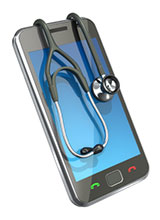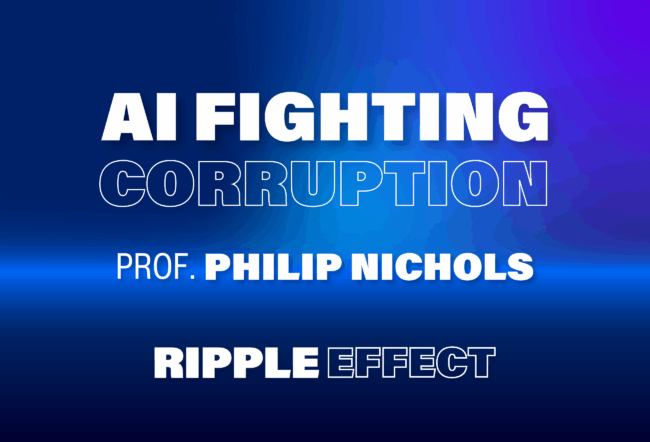During the first annual Connected Health Symposium at the University of Pennsylvania in April, faculty members and entrepreneurs spent a day showcasing new mobile tools that patients can use to communicate with their physicians, chart their progress reaching health goals and interact with other people who are facing similar medical challenges. This is the essence of the connected health movement — a groundswell of mobile apps, wireless devices, and websites designed to bring patients together with the people who want to keep them healthy. The symposium ended with a provocative question posed by Ralph Muller, CEO of the University of Pennsylvania Health System: “But do consumers want to be so connected?”
Entrepreneurs are betting the answer to that question will be “absolutely.” But they’re facing a host of challenges: The U.S. Food & Drug Administration is preparing to release guidelines for mobile medical apps that could require some companies to seek the agency’s approval for their products before they can go to market. Even if firms clear those regulatory hurdles, designing the gizmos so they appeal to tech-averse types, such as the elderly, will be far from straight forward. “I do think the big challenge, once the technology has been created and approved, is going to be focusing on behavior change in high-risk populations,” notes Kevin Volpp, Wharton professor of health care management, who also spoke at the symposium. As for whether patients want to be so connected, Volpp says, “Some do and some don’t, and that’s part of the challenge.”
While the earliest connected-health efforts centered on maintaining wellness — with companies such as Fitbit offering a variety of apps and wireless devices people can use to track exercise goals and the like — more recent innovations are aimed at specific patient groups. In particular, they target people with chronic diseases that require daily vigilance, such as heart failure, diabetes and obesity.
For example, Boston-based Wellframe used technology developed at Harvard and the Massachusetts Institute of Technology to create what co-founder and CEO Jacob Sattelmair refers to as a “digital concierge for patients with chronic illness–something that gives them guidance to stay on track.” Sattelmair, who spoke at Penn’s symposium, says the company, founded in 2012, is pilot testing its first app on patients who are recovering from heart attacks.
Generally, heart patients are expected to attend rehab sessions several times a week, where they’re taught exercises to strengthen their hearts. But patients often miss their appointments because of work conflicts and other issues, Sattelmair notes. “Our vision was to use technology to extend the reach of that kind of program, to make it more accessible to more patients, and to lower the unit cost of delivering it,” Sattelmair says.
Patients are prescribed an app that gives them daily tasks to do during rehab to lower their risk of having another heart attack, which include reminders to take their medicine. Wellframe’s app also uses the phone’s accelerometer to track and report how much physical activity patients are doing. “We’re not looking at technology as a replacement for human care, but rather an amplification,” Sattelmair states.
The company’s initial feasibility trial involved patients ranging in age from 40 to 80, who used the app for several months. “We had very high engagement rates and very good feedback from both patients and physicians,” Sattelmair says. During the trial, more than 80% of participants were “engaged” in their rehab program, meaning they did more than half of their daily tasks. The firm hopes to present the full results of the trial at an upcoming cardiac rehab conference.
According to Sattelmair, payment systems for apps such as Wellframe’s have yet to be worked out, but he is optimistic insurers will eventually join the ranks of connected-health supporters. “There are a number of policy changes that are driving providers to re-think the way they deliver care,” including penalties for hospitals with high readmission rates, and the rise of accountable care organizations, which are networks of providers that receive “bundled” payments from insurers based on the quality of care they provide, he says. “We don’t expect changes to happen overnight, but we do think there are very substantial changes afoot.”
Forging a Way to Health
In 2009, Penn received funding from the National Institutes of Health to launch Way to Health, a series of studies that track the effectiveness of digital health tools, combined with economic incentives for improving health outcomes. “We use devices like pedometers, remote glucometers, blood pressure cuffs [and] scales,” notes Volpp, who co-manages the program with Wharton health care management professor David Asch. “We’re really interested in testing ways to improve engagement among people who are at high risk.” The behaviors the researchers are trying to encourage include smoking cessation, weight loss and medication adherence.
While only a handful of the studies have been completed, early results suggest that technology and tangible incentives can be a powerful combination. For example, in one study performed at the Children’s Hospital of Philadelphia (CHOP), overweight employees were recruited to participate in one of three weight-loss programs. The members of the first group were given weight-loss goals and electronic reminders to attend weekly weigh-ins. In the second group, people attended the weigh-ins and received a $100 electronic payment if they met their goals. Those in the third group received the same financial incentive, plus more: They were each placed in groups of five employees and told that if every group member (who remained anonymous) reached his or her goal, the group would split $500.
“We found that the group incentive was significantly more effective in helping people lose weight,” says Volpp. The study, published in April in the Annals of Internal Medicine, showed that the group incentive produced weight loss that was about 3.2 kilograms greater than what the individual-incentive group achieved.
The study participants weighed themselves on an electronic scale that took their photos during the weigh-ins, not only to verify their identities, but also to provide immediate visual feedback on their weight-loss progress, Volpp states. The technology helped spur weight loss, he adds, but he suspects it was the combination of the scale, the financial incentives and social pressure that made the difference. “Technology in and of itself only gets you so far,” he points out. “Our general observation is that high-risk people with poorly controlled disease don’t use technology all that much. You really need an engagement strategy around getting people to use it.”
In another Way to Health study launching this summer, Wharton professor of business economics and public policy Judd Kessler plans to use a combination of technology and a variety of social and economic incentives to try to determine how best to get patients to stick to a medication regimen. His study uses a pill bottle that has a built-in Bluetooth transmitter in its cap, which transmits a signal to the Way to Health platform whenever it’s opened (and presumably the study participant has taken a pill).
The purpose of the study, Kessler says, is not only to see what works best for encouraging medication adherence, but also to determine the most effective methods of helping people form new habits that stick, even after the intervention ceases. The members of one group — the “control” arm of the trial — will just get the wired pill bottle. Another group will get the bottle, along with an e-mail, phone or text reminder to take their pills. A third group will get all that plus a weekly report telling them how well they did on medication adherence. Another set of participants will get $1 for each day they take their medication as directed. And the final group — dubbed “feedback friend,” — won’t get the monetary incentive, but instead will assign a friend or family member to receive a copy of the weekly report. “The idea is if it’s my father, he can recommend me or my brother to be his feedback friend, and we’ll see each week how well he did, and we can call him and encourage him to do better, or call him and congratulate him,” Kessler notes.
Kessler says he’s particularly interested in seeing how well the feedback friend approach works. “My research focuses on social forces in different types of behaviors,” he says. “So it’s medication adherence in this study, but it’s more broadly about doing things that are good for society.” Previous research suggests social forces can be powerful in a health care setting, he adds.
Overcoming Hurdles
For entrepreneurs who are trying to commercialize connected health platforms, there can be challenges. In May, the FDA warned an Indian company called Biosense Technologies that its app is considered a medical device, and therefore must gain regulatory approval. The company markets the app, called uChek, for analyzing urine-testing strips that are approved by the FDA — but only for direct visual interpretation. Once the mobile phone is being used to analyze the strips, the app must get separate clearance as a medical device, the agency said in its letter to Biosense.
By the end of the year, the FDA expects to release guidelines intended to clarify which mobile apps need to gain regulatory clearance. A draft version of the guidelines suggests that apps designed to make diagnoses, such as the Biosense product, will need to be approved as medical devices. The document also suggests that the FDA might exert oversight when apps are designed to collect information about specific patients and use it to assist physicians in tasks such as calculating drug doses.
Ryan Sysko, co-founder and CEO of Baltimore-based WellDoc and a speaker at Penn’s symposium, told the audience that his company spent more than two years getting FDA clearance for its first product, a diabetes app that patients use to interact with their physicians and to manage their medications, glucose testing and lifestyle choices. Physicians are meant to prescribe the app just like they would a drug, so the company set out to gain FDA approval from the time it launched in 2005.
“What the FDA wants to know is that your company is in a state of control, and that you have quality systems and standard operating procedures that govern almost everything you do,” Sysco notes. “I think that’s the single biggest investment small companies have to make. That was certainly the case for us. Part of the reason it took so long for us was that our processes were not mature, and there were deficiencies in the app. Also this was incredibly new for the FDA.”
Regulatory challenges aside, inventors of connected-health devices are still learning where such technology can best be deployed. Using technology to spur healthy behaviors in the elderly can be a challenge, says Jason Karlawish, a Penn professor of medicine and senior fellow at the Center for Bioethics and the Leonard Davis Institute of Health Economics. “There’s still work to be done in this area, because I think that if you look across age groups, older adults tend to be more responsive to ideas of pleasure that emphasize calmness and enjoyment, whereas younger adults tend to be more future-oriented and favorable to excitement,” Karlawish says.
Karlawish recently wrapped up a study looking at the difference between economic and emotional rewards in motivating older people to exercise. In the study, some participants got a description of a walking program that was “emotionally neutral” and promised no financial award, Karlawish says. Others got a more positive message about the program but also no monetary reward. The third and fourth groups got one of the two messages, plus a monetary reward if they met their goal. “It looks like there was no significant difference between a promise of money and just an emotionally positive message,” Karlawish notes.
So just how connected do patients want to be to the health care system? Will they sign on to all this new technology if the connected-health movement goes so far as to allow them to be in constant contact with their physicians? The answer has yet to be determined, according to Penn’s faculty experts.
In a study that was completed and is now under review for publication, Volpp says, patients with poor control of their blood sugar and blood pressure received feedback on their progress, as well as the opportunity to connect electronically with their physicians. “The program worked very well, but it’s hard to know how much of that was attributed to the link to a clinician and how much was due to the daily feedback,” Volpp notes. All told, he adds, all the inventors of connected-health devices need to be cognizant of technology’s limitations. “Technology is an enabler. The key challenge is changing people’s behavior.”



